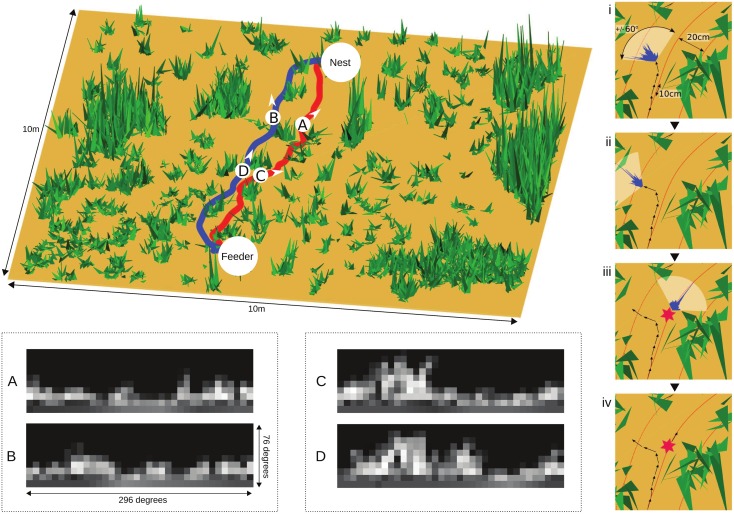Fig 1. The ant’s navigational task.
Left: 3D mapping of the real ant environment, which consists of flat ground and clumps of vegetation. Two actual routes followed repeatedly by individual ants from feeder to nest are shown. From a given ground point (e.g. locations A, B, C and D as indicated), the visual input of a simulated ant facing a given direction can be reconstructed, applying a 296 degree horizontal field of view, 8 degree/pixel resolution, inversion of intensity values and histogram equalization. The task of following a specific route requires distinguishing ‘familiar views’, e.g. for the red route, views A and C, from ‘unfamilar views’ e.g. B and D from the blue route, despite their substantial similarity. Right: how route following capability is assessed. The simulated ant is trained with images taken at 10cm intervals facing along a route. To retrace the route, it scans +/-60 degrees (i), evaluating the familiarity at each angle (distribution shown in blue), then moves 10 cm in the most familiar direction (ii). Deviating more than 20cm from the route is counted as an error (iii) and the ant is replaced on the nearest point of the route to continue (iv), until home is reached.

